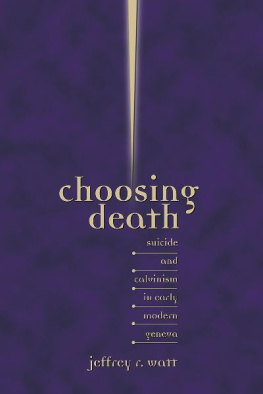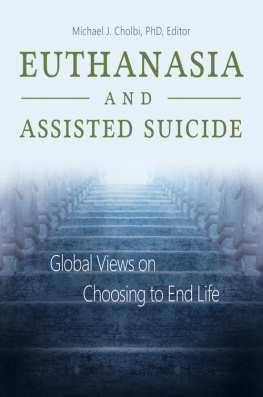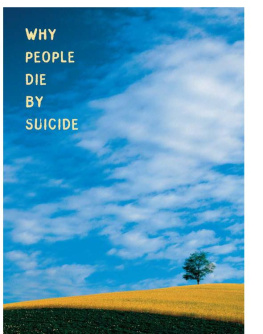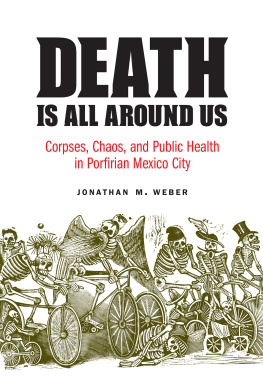ACKNOWLEDGMENTS
First and foremost I toast my partner in life, Jerry McCormick. He helped me stay sane while balancing the pressures of administrative appointments with academic research and writing. He made me coffee and breakfast in the mornings before I disappeared to my library carrel on Saturdays or while I carved out some writing time during the week before university offices opened. Every person should have such a generous partner and friend. Love and admiration also goes to my two adult sons, Ian and Orion. I marvel each day at the lives you lead.
I thank my colleague Elliott West, who generously shared his own research funds so that I could spend a summer in Mexico City to wrap up my archival sleuthing. My appreciation also extends to the deans office of the J. William Fulbright College of Arts and Sciences for the year of research and writing time they afforded me before I took on the duties of administration in the college. Dean Todd Shields encouraged me to make time for the book as I polished the manuscript and prepared it for publication. Working alongside him and my fellow deansYvette Murphy-Erby, Jeannine Durdik, Steve Beaupre, Simon Chua, and Lisa Summerfordhas been stimulating and rewarding.
The deans office staff, which includes Debbie Powers, Sharon McFarland, and Dawn Fisher, have welcomed me warmly and been the model of professionalism and generosity. The staff of the history departmentJeanne Short, Brenda Foster, and Melinda Adamsmade my initial foray into university administration a positive experience. Their innovation, good cheer, and senses of humor made coming to work each day a joy.
Successful research relies on the numerous archivists and librarians who allow us scholars to do our jobs. I am especially grateful to the staff of the interlibrary loan department at Mullins Library at the University of Arkansas for expediting the borrowing of multiple reels of microfilm and primary sources. Librarians Angela Fritz and Beth Juhl secured me access to important newspaper databases. The professional archivists at the Archivo General de la Nacin, Archivo Histrico de Salubridad y Asistencia, and Fondo Reservado of the Hemeroteca at Universidad Nacional Autnoma de Mxico made this book possible. Even the armed guards who stood a yard from me at Salubridad y Asistencia as I poured through asylum records played a role, as they made me ponder the sensitivity of conducting historical research. Family lineage and reputation still matter in Mexico. Documents in the hands of anyone with nefarious intentions have the potential to provoke scandal.
The consummate professionals at the University of California Press deserve my sincere gratitude. Acquisitions editor Kate Marshall showed enthusiasm for the project early on; Bradley Depew and Jessica Moll stewarded the book to production; and Genevieve Thurston polished the prose with her superb copyediting.
Finally, I extend my good cheer to a close group of friend-colleagues who have shared drinks, meals, conference trips, and snarky repartee. You know who you are! Performing the acts of a historian is blissful enough, but sharing work and play life with stimulating colleagues takes it to the moon.
Introduction
POPULAR CULTURE HAS LONG CONFLATED Mexico with the macabre. Day of the Dead commemorations in early November find families gathered at gravesites feasting on tamales, festooning tombstones with marigolds, and toasting their loved ones. National icons include the bandolier-emblazoned bandit-cum-revolutionary, who populates the pages of history and T-shirts sold in tourist shops. Responding with rakish nonchalance to danger, the outlaw epitomizes stereotypes of Mexicans as reckless and violent. Roadside shrines to Santa Muerte (Saint Death) and Jess Malverde, the protector of narcotraffickers and cops, further insinuate Mexicos intimacy with all things ferocious and deadly. The all-too-common drug cartel practice of hanging headless corpses from overpasses haunts the imagination and perpetuates the notion that Mexicans possess a culture of violence. Furthermore, some intellectuals persuasively argue that Mexicans have a special relationship with death, formed in the crucible of their hybrid Aztec-European heritage. Death is their intimate friend; death is mocked and accepted with irony and fatalistic abandon. The commonplace nature of death in Mexico desensitizes Mexicans to suffering. Death, simply put, defines Mexico. Essentializing a diverse group of people as possessing a unique death cult delights those who want to see the exotic in Mexico or distinguish that society from its peers. Examining tragic and untimely deathnamely self-annihilationreveals a counternarrative. What could be more chilling than suicide, especially the violent death of the young? What desperation or madness pushes victims to raise a gun to the temple or slip a noose around the neck? A close examination of a wide range of twentieth-century historical documents proves that Mexicans did not accept death with a cavalier snicker, nor did they develop a unique death cult for that matter. It was quite the reverse. Mexicans behaved just as their contemporaries did in Austria, France, England, and the United States. They devoted scientific inquiry to the malady and mourned the loss of each life to suicide.














